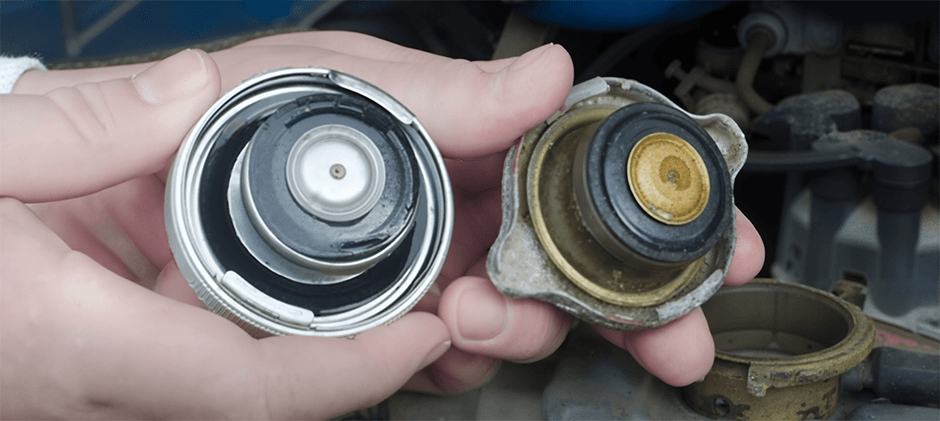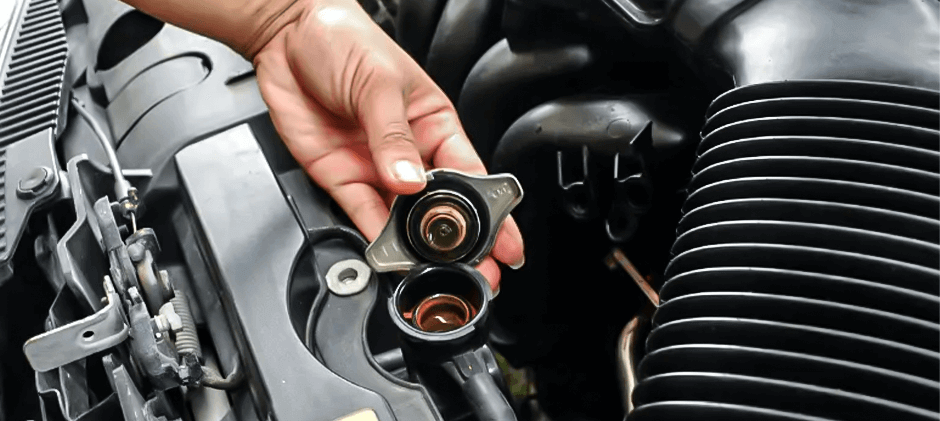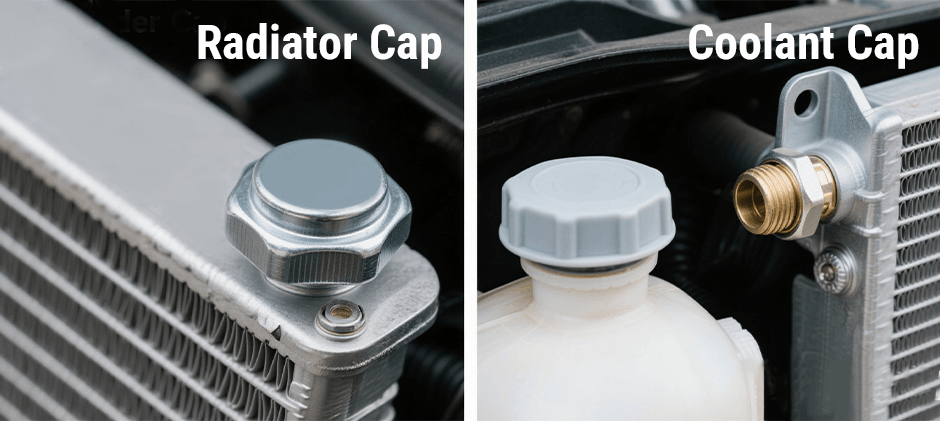In the maintenance and repair of heavy equipment, you may usually pay more attention to the main parts with obvious faults, such as hydraulic components, engines, transmissions, etc., and often overlook the minor parts. Sometimes they are the focus you need to pay attention to. Today, we are going to discuss two important parts, the radiator cap and the coolant cap. They look similar at first glance and many people use them interchangeably, but they are not always the same concept. They are sometimes completely different things in different cooling system designs. If you are confused about the difference between the two when repairing, like me, then this article will help you to understand the difference and function of the two and the importance of using the cap correctly, so that you will no longer be confused when repairing or replacing parts.
What is a Radiator Cap?
The radiator cap is usually located right above the radiator on a piece called the filler point. You will only find a radiator cap located directly on the radiator. It looks like a simple bottle cap, but it actually plays a very critical role in terms of function. It usually serves to seal the radiator, pressurize the system, and manage the coolant flow.
What is a Coolant Cap?
As cooling systems became more advanced, many manufacturers of heavy equipment moved the “fill point” away from the radiator. Instead, they use a sealed, pressurized plastic tank that is part of the cooling circuit. This tank is called a coolant expansion tank or a degas bottle. The cap on this tank is what we properly call a coolant cap. The coolant cap may sometimes be designed with a pressure regulation function (similar to the radiator cap), but usually, the pressure regulation effect is not as strong as that of the radiator cap. It usually only serves to seal the fuel tank and ventilate the air.
Differences Between the Radiator Cap and Coolant Cap
The radiator cap and coolant cap are still two completely different parts in different cooling system designs. If you want to distinguish them, you can observe them from the following points.
Position
A radiator cap is installed directly on the radiator. However, the coolant cap is located on the coolant reservoir or expansion tank.
Primary Function
A radiator cap maintains pressure within the radiator with a pressure-release valve. The coolant cap seals the coolant reservoir, preventing leaks and allowing coolant addition. The radiator cap focused on system pressure management and sealing the radiator. The coolant cap focused on sealing the coolant reservoir and facilitating maintenance.
Pressure Regulation
A radiator cap actively regulates and releases system pressure to prevent overheating and boiling. The coolant cap may include pressure regulation, but mainly seals the reservoir; it is less involved in pressure control.
Role in System
A radiator cap controls pressure directly on the radiator, ensuring cooling efficiency and system integrity. The coolant cap ensures coolant levels are maintained, prevents contamination, and allows vapor escape.
| Feature | Radiator Cap | Coolant Cap |
|---|---|---|
| Location | On the radiator | On the coolant reservoir/expansion tank |
| Main Function | Regulate system pressure via pressure-release valve | Seal the reservoir, prevent leaks, and allow coolant addition |
| Pressure Control | Yes, actively regulates pressure | Sometimes, but mainly seals, play a less active role |
| Primary Focus | Maintain radiator pressure and integrity | Maintain coolant level and vent gases |
| Role in Cooling System | Direct pressure regulation for cooling efficiency | Sealing and maintenance of the coolant reservoir |
It’s worth noting that the radiator cap is more prone to damage due to the high heat and pressure it endures. Its seals and valves can wear out faster, typically requiring replacement every 2–3 years. In contrast, the coolant cap faces less stress and usually lasts longer, around 3–5 years. If your cap is too old, please replace it without hesitation. Their prices are not expensive. The original price of the cap on the market is about $50-$100, but the price of the aftermarket cap, such as FridayParts, is only $10-$30. Replacing the cap is much more cost-effective than repairing the engine hood, which costs more than US dollars.
How to Quickly Distinguish Them?
It is easy to distinguish between them by their appearance, material, location, and functionality.
Appearance and Material
- The radiator cap is usually larger, made of metal, and has a more complex structure.
- The coolant cap is typically smaller, made of plastic, and has a simpler design.
Mounting Location
- The radiator cap is mounted directly on the radiator.
- The coolant cap is located on the reservoir or expansion tank and may be labeled “Coolant” or “Reservoir.”
Functionality
- The radiator cap regulates system pressure, often featuring a spring-loaded pressure relief valve and pressure markings.
- The coolant cap mainly seals the reservoir without pressure regulation and usually lacks a visible relief valve.
Through the above methods, you can quickly and accurately identify which accessories you need when it is necessary to replace them.
 When is the Same or Not?
When is the Same or Not?
These two covers on construction machinery play different roles in maintaining the engine. The structural design also varies depending on the brand, year, and adaptation system. Therefore, the two cannot be completely mixed during maintenance. Unless you can clearly know that they are adapted to the same equipment and can be installed in the same position. But when they are the same and when they are different, it is necessary to distinguish them.
When were they the same thing?
In many heavy machinery and large equipment, the design of the radiator and cooling system will use an “integrated pressure cap”. This type of design usually uses a “composite cap”. In this case, the “coolant cap” and “radiator cap” are actually the same part. In simple terms, if the unit uses a single pressure cap to enclose both the radiator and the reservoir, then they are the same thing.
When are they not the same thing?
Some heavy equipment uses separate cooling paths with two different caps. The radiator cap handles pressure regulation and seals the core system, while the reservoir has a coolant cap for refilling, venting, sealing, and checking fluid levels. These caps often differ in design and pressure settings. For example, in some large excavators, the radiator cap manages all pressure, and the reservoir cap only allows refilling. In this case, they are not the same.
In simpler or integrated systems, common in modern machines, one cap may serve both functions. But in complex systems, the radiator and coolant caps are separate parts with distinct roles.
Conclution
While radiator caps and coolant caps may look similar, their roles in the cooling system are often very different. Understanding their differences—location, function, pressure control, and system design—is essential for proper maintenance and part replacement. Misidentifying them can lead to performance issues or even engine damage. By knowing when they are interchangeable and when they are not, you can avoid costly mistakes and keep your heavy equipment operating safely and efficiently. Need to replace a cap? FridayParts offers high-quality radiator and coolant caps designed for durability and compatibility. You can always find the right part for your machine.

